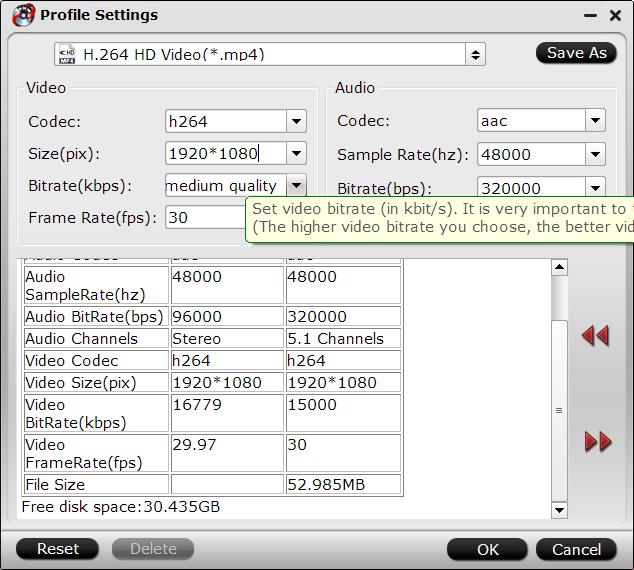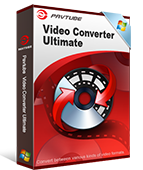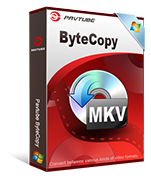From time to time, you get confused that PS4 supports AVI in the manual but you just couldn’t play AVI on PS4 via USB. And you originally thought that MP4 cound be played on any multimedia devices and media players but when you transferred MP4 to iPad, you couldn’t play the video. Why? What you saw is a video extension or video format while a video container can different video codecs.

Normally, multimedia devices and media players not only have limitation on video format, they also have requirement on video codecs. That’s why you saw the video format in their file supported list but you couldn’t play the video. If you want to learn what is codec and what popular codecs are, just read on.
What Is a Codec?
A codec – or coder/decoder – is an encoding tool that processes video and stores it in a stream of bytes. Codecs use algorithms to effectively shrink the size of the audio or video file, and then decompress it when needed. There are dozens of different types of codecs, and each uses a different technology in order to encode and shrink your video file for the intended application.
Learn >> Multimedia Container Formats
Below are the common video codecs and standards you will see in daily life. This part is from divxland.org site where video codecs are explained detailedly.
Common video codecs and standards
-
H.261: Used primarily in older videoconferencing and videotelephony products. Developed by the ITU-T group, this was the first practical digital video compression standard. Essentially all subsequent standard video codec designs are based on it. It included such well-established concepts as YCbCr color representation, the 4:2:0 sampling format, 8-bit sample precision, 16×16 macroblocks, block-wise motion compensation, 8×8 block-wise discrete cosine transformation, zig-zag coefficient scanning, scalar quantization, run+value symbol mapping, and variable-length coding.
-
MPEG-1 Part 2: Used for Video CDs, and also sometimes for online video. The quality is roughly comparable to that of VHS. If the source video quality is good and the bitrate is high enough, VCD can look better than VHS, and all in all very good, but VCD requires high bitrates for this. However, to get a fully compliant VCD file, bitrates higher than 1150 kbit/s and resolutions higher than 352 x 288 should not be used. When it comes to compatibility, VCD has the highest compatibility of any digital video/audio system. Almost every computer in the world can play this codec, most DVD players support it.
-
MPEG-2 Part 2: Used on DVD, SVCD, and in most digital video broadcasting and satellite TV distribution systems. When used on a standard DVD, it offers good picture quality and supports widescreen. When used on SVCD, it is not as good as DVD but is certainly better than VCD. In terms of technical design, the most significant enhancement in MPEG-2 relative to MPEG-1 was the addition of support for interlaced video. MPEG-2 is now considered an aged codec, but has tremendous market acceptance and a very large installed base.
-
H.263: Used primarily for videoconferencing, videotelephony, and internet video. H.263 represented a significant step forward in standardized compression capability for progressive scan video. Especially at low bit rates, it could provide a substantial improvement in the bit rate needed to reach a given level of fidelity.
-
MPEG-4 Part 2: An MPEG standard that can be used for internet, broadcast, and on storage media. It offers improved quality relative to MPEG-2 and the first version of H.263. Its major technical features beyond prior codec standards consisted of object-oriented coding features and a variety of other such features not necessarily intended for improvement of ordinary video coding compression capability. It also included some enhancements of compression capability, both by embracing capabilities developed in H.263 and by adding new ones such as quarter-pel motion compensation. Like MPEG-2, it supports both progressive scan and interlaced video.
-
MPEG-4 Part 10: A technically aligned standard with the H.264, also referred to as AVC. This emerging new standard is the current state of the art of ITU-T and MPEG standardized compression technology, and is rapidly gaining adoption into a wide variety of applications. It contains a number of significant advances in compression capability, and it has recently been adopted into a number of company products, including the PlayStation Portable, iPod, the Nero Digital product suite, Mac OS X v10.4, as well as HD DVD/Blu-ray Disc.
-
DivX, Xvid, and 3ivx: Different implementations of the MPEG-4 Part 2 standard.
-
VP6: TrueMotion VP6, is a video codec developed by On2 Technologies as a successor to earlier efforts such as VP3 and VP5. The VP6 codec has been used in products for broadcasting in the field, such as with BBC reporters and QuickLink software. Currently, On2 VP6 is the video compression technology that Macromedia/Adobe licensed for its Flash 8 family of products.
-
Sorenson 3: A codec that is popularly used by Apple’s QuickTime, basically the ancestor of H.264. Many of the QuickTime movie trailers found on the web use this codec.
-
Theora: Developed by the Xiph.org Foundation as part of their Ogg project, based upon On2 Technologies’ VP3 codec, and christened by On2 as the successor in VP3’s lineage, Theora is targeted at competing with MPEG-4 video and similar lower-bitrate video compression schemes, but without significant success.
-
WMV (Windows Media Video): Microsoft’s family of video codec designs including WMV 7, WMV 8, and WMV 9. It can do anything from low resolution video for dial up internet users to HDTV. It is widely used on Media Centre PCs. WMV can be viewed as a version of the MPEG-4 codec design.
-
RealVideo: Developed by RealNetworks and aimed for streaming media over Internet. A popular codec technology a few years ago, now fading in importance and popularity for a variety of reasons.
-
Cinepak: A very early codec used by Apple’s QuickTime.
All of the codecs above have their qualities and drawbacks. The tradeoff between bit rate and fidelity (including artifacts) is usually considered the most important figure of technical merit.
How to Change Video Codec?
Pavtube Video Converter Ultimate is a video transcoder that can transcode your video codec without changing your video format. It also can remux video to another format keeping original video codec and audio settings. It can accept nearly all video format/container including MKV, MP4, AVI, WMV, FLV, ACVHD, MXF, even Blu-ray and DVD and Pavtube Video Converter Ultimate can offer you hundreds of video formats and containers.
When you need to change video codec, you should launch the software and add your video files by click "Files" button at the top left corner. Then you can choose wanted output format. To change video codec, you should click "Settings" button on the interface to open a new windows like below. In Video Codec, you can choose your desired codec.

What’s more, Pavtube Video Converter is also a video editor. It enables you to compress 4K to 1080p full resolution video for smoothly playback on portable devices or other file formats with small file size but with high quality. On top of that, it provides many basic but distinctive video editing functions such as video trimming, cropping, splitting, merging, parameters adjusting, watermarking, subtitle inserting, color effecting to help enhance your video to a high level.
Related Articles:
- Top 4K Video Editor to Play/Edit/Convert 4K Videos Windows Mac
- How Can I Play Any Video File Format on Windows Media Player 12?
- Top 10 Audio Converter for macOS Sierra/El Capitan
- Integrate All Movies to MP4 for Plex Around House Streaming
- Copy Netflix DVDs to Movie Collections on Mac (macOS Sierra/El Capitan)












